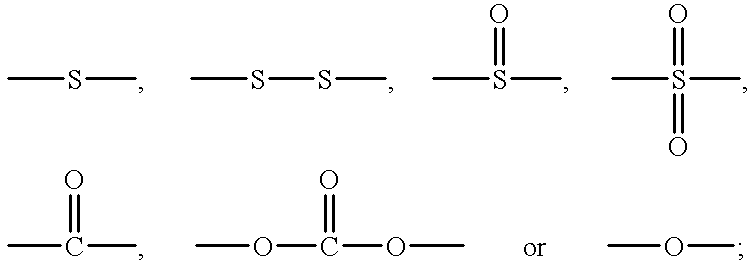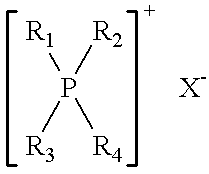Integrated continuous process for upstaging epoxy resins
a technology of epoxy resin and continuous process, which is applied in the direction of chemical/physical/physical-chemical stationary reactors, chemical apparatus and processes, chemical/physical/physical-chemical processes, etc., can solve the problems of heat transfer problems, difficult to maintain the homogeneity of temperature in a large batch reaction vessel, and localized hot spots
- Summary
- Abstract
- Description
- Claims
- Application Information
AI Technical Summary
Benefits of technology
Problems solved by technology
Method used
Image
Examples
examples showing continuous
PROCESSES
Description of the Integrated Continuous Reaction System
A schematic diagram of the Integrated Continuous Reaction System is shown in FIG. 1. A lower molecular weight liquid epoxy resin from first source 2 and a compound, such as a polyhydric phenol, from second source 4 are fed co-currently into mixing unit 6. A pump and / or other mechanism may be used to effect the feeding. It is also optional to purge the sources and the rest of the system with nitrogen or other gases inert to the system to avoid exposure to or contact with air, unintended decompositions or other changes of the materials.
The pre-mixed or admixed blend 8 is then fed co-currently with catalyst from source 10 to form a reaction mixture 12, which is sent to reaction chamber 20. The reaction mixture 12 can be sent to the bottom of the reaction chamber if an upflow reaction chamber is used. There could be in-line static, dynamic or combinations mixing mechanisms, means or designs to allow the formation of 12, a ...
example 1
The LER and BPA charge rates into the premix vessel were respectively set at 6 Kg and 3.1 Kg / hr (13.2 and 6.8 lb / hr), and the vessel temperature was maintained at 105-115.degree. C. (220-240.degree. F.). The homogeneous mixture was pumped from the premix vessel along with the catalyst solution (@ 18.2 g / hr) into the bottom entry point of the LIST reactor. The agitator inside the LIST reactor was set at 22 rpm.
Regulated steam sources were respectively supplied to the three reaction zone jackets, and the temperature readings near the outlets of the zones were: 148.degree. C. (299.degree. F.), 163.degree. C. (325.degree. F.) and 181.degree. C. (357.degree. F.). The pressure reading at the exit was 1.18 MPa (157 psig).
Samples taken at exit at steady state gave 1963 WPE. GPC molecular weights are given in Table 1.
example 2
The LER and BPA charge rates into the premix vessel were set respectively at 10.4 and 5.4 Kg / hr (23.0 and 12.0 lb / hr), and the vessel temperature was maintained at 105-115.degree. C. (220-240.degree. F.). The homogeneous mixture was pumped from the premix vessel along with the catalyst solution (@ 31.8 g / hr) into the bottom entry point of the LIST reactor. The reactor agitator was set at 22 rpm.
Regulated steam sources were respectively supplied to the three reaction zone jackets, and the temperature readings near the outlets of the zones were: 144.degree. C. (292.degree. F.), 172.degree. C. (341.degree. F.) and 194.degree. C. (382.degree. F.). The pressure reading at the exit was 536 kPa (63 psig).
Samples taken at exit at steady state gave 2057 WPE. GPC molecular weights are given in Table 1.
PUM
| Property | Measurement | Unit |
|---|---|---|
| temperature | aaaaa | aaaaa |
| temperature | aaaaa | aaaaa |
| temperature | aaaaa | aaaaa |
Abstract
Description
Claims
Application Information
 Login to View More
Login to View More - R&D
- Intellectual Property
- Life Sciences
- Materials
- Tech Scout
- Unparalleled Data Quality
- Higher Quality Content
- 60% Fewer Hallucinations
Browse by: Latest US Patents, China's latest patents, Technical Efficacy Thesaurus, Application Domain, Technology Topic, Popular Technical Reports.
© 2025 PatSnap. All rights reserved.Legal|Privacy policy|Modern Slavery Act Transparency Statement|Sitemap|About US| Contact US: help@patsnap.com



